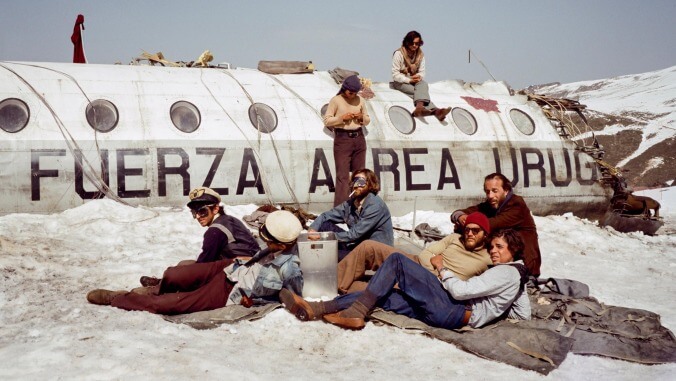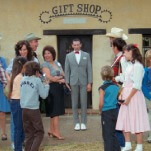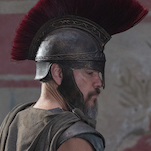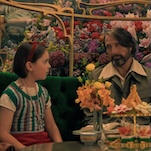Society Of The Snow review: Another take on a harrowing true-life plane crash
Director J.A. Bayona comes up short in the latest adaptation of 1972’s Miracle of the Andes

It’s shocking that the crash of Uruguayan Air Force Flight 571 has inspired such lackluster adaptations of the harrowing affair, in which a rugby team and their friends and family are stranded in the snow-covered Andes mountains for 71 days. Survive!, a low-budget Mexican production from 1976, played up the exploitative schlock value which was popular in disaster flicks of the era. 1993’s formidable yet faulty Alive, from director Frank Marshall, used an American-heartthrob-cast and leaned heavily into melodrama and sensationalism. The latest take on the tragedy, Spanish director/co-writer J.A. Bayona’s Society Of The Snow, seeks to restore honor to those brave men and women who battled insurmountable odds.
Bayona is no stranger to capturing humanistic, grief-driven ordeals, having done so with gobs of grace in The Impossible. With Society Of The Snow, Bayona and screenwriters Bernat Vilaplana, Jaime Marques and Nicolás Casariego follow the map author Pablo Vierci has drawn as a guide, but the result is a film that focuses less on the characters’ individual psyches and more on the factual details from a compelling real-life human drama.
The story opens with narration from passenger/primary protagonist Numa (Enzo Vogrincic) ruminating on the effects that extreme trauma can have on people. As we see the Old Christians Club rugby team play in Montevideo, Uruguay, the filmmakers drop an obvious set-up for teamwork—one ripe for a third act callback with players Roberto (Matías Recalt) and Nando (Agustín Pardella). The squad has plans for a field trip to Santiago, Chile, where the students can play and pick up chicks with their friends, including law student Numa. However, for some this weekend getaway to let off steam before graduation and adulthood goes from a figurative last hurrah to a literal one.
During the flight, the fluid camera moves through the aisle capturing the young men relaxing, playing card games and chatting as the group’s de-facto documentarian Tintin (Agustín Della Corte) takes photos. One passenger jinxes it though, describing the mountains they’re traversing as a shark with the jagged terrain as its teeth and the climate trapping them like prey. Soon enough the cliffs narrow in, wings are sheared off, the plane splits in two, and the cabin and cockpit rapidly toboggan to its final resting place—with a fraction of the original passengers still alive. The survivors face freezing temperatures, religious crises, severely injured comrades, and a scant food supply as they try to figure out how to survive long enough to be rescued. But Mother Nature is cruel and she’s raging. A creeping death by starvation awaits.








































